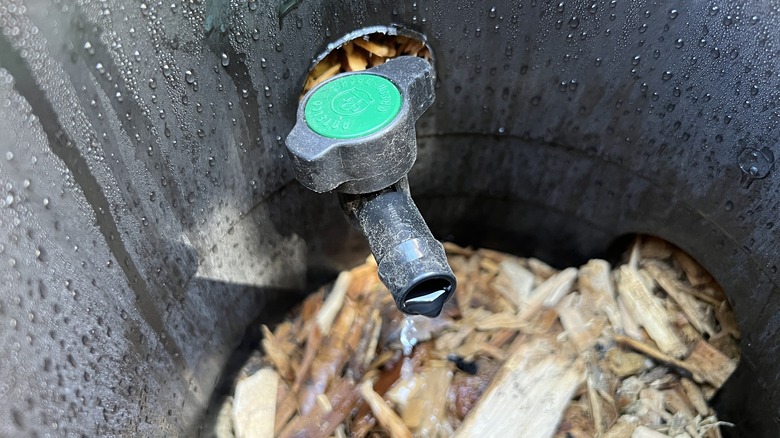The Interesting Way Property Brothers' Jonathan Scott Reduces Water Usage At Home
As the global water crisis continues to intensify, efficient water management is needed more than ever. By conserving water, we can help alleviate pressure on strained water supplies, help protect natural water sources, and save energy. One way to do this is by implementing home systems to facilitate a more sustainable lifestyle. In a recent Instagram post, Jonathan Scott shared how he reduces water usage in his California home through the use of a greywater system.
Greywater refers to the relatively clean wastewater generated from showers, baths, sinks, laundry machines, and similar sources. It's distinct from blackwater, which includes wastewater from toilets and kitchen sinks, so it doesn't contain those high levels of contaminants. Greywater systems are designed to collect, filter, and reuse greywater for certain purposes. These systems contribute to water conservation by reducing the demand for fresh water and easing the strain on sewage systems. Said Scott, "There is no better way than a greywater recycling system."
How a greywater system works and its benefits
The complexity of greywater systems can vary, from the installation and maintenance to the quality of greywater treatment. Generally, they work by collecting water from various sources within a house, separating the greywater from the blackwater, carrying out basic filtration, applying additional levels of treatment, and storing the greywater in an outdoor tank where it's ready for use. Once the greywater has been treated for impurities and stored, it can typically be used for things like irrigation and flushing toilets.
Especially in areas facing water scarcity or high water costs, greywater systems can be an effective and relatively simple method to help conserve water and cut costs on utility bills. As Jonathan Scott explained about his own greywater system, "The more water we can reuse on-site, the less water I'm drawing from the city, which puts a little less demand on the city, as well as, I'm not paying for water that I don't need to pay for" (via Instagram).
How to install a greywater system
Before implementing one of these water-recycling systems, it's crucial to understand local regulations and guidelines. As Jonathan Scott noted on Instagram about his own system, "If you're putting in a greywater system, you want to make sure that it is going to be safe. That's why we have an NSF certification. We use Ecovie to put in this Aqualoop system that patents a technology that allows it to process all that water properly and safely."
Ecovie provides different types of water management systems and products, including the aforementioned Aqualoop, which is "the only greywater system with NSF350 C certification for commercial and residential use" (via Ecovie). The underground greywater system setup in Scott's backyard is covert and only needs servicing twice a year.
Alternatively, you can DIY a greywater system. To do this, first, install a diverter valve and pipe to divert water from your home water source. Then, install a filter after the valve, add a plumbing system from the filter to a storage tank, and install a valve with a spigot on the tank. Lastly, choose your preferred dispensing method.

